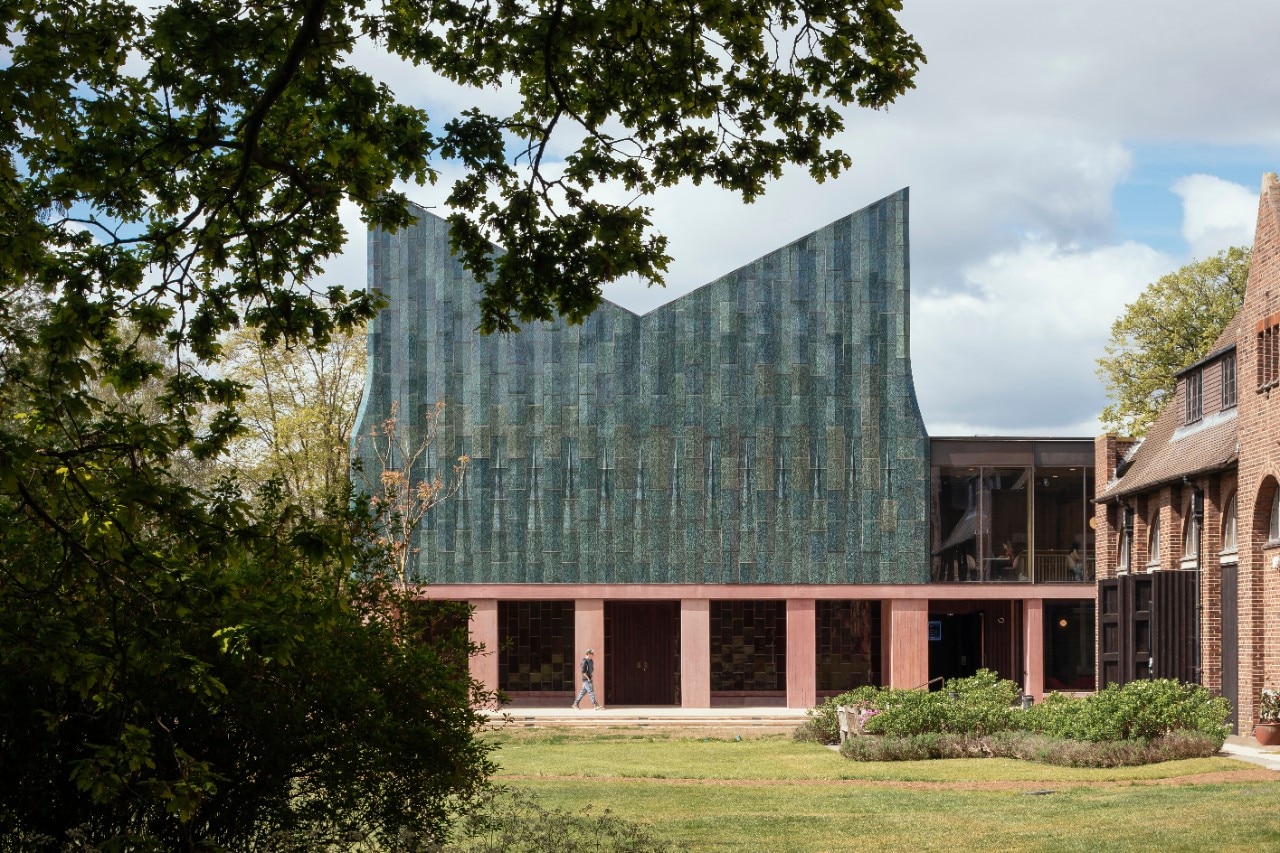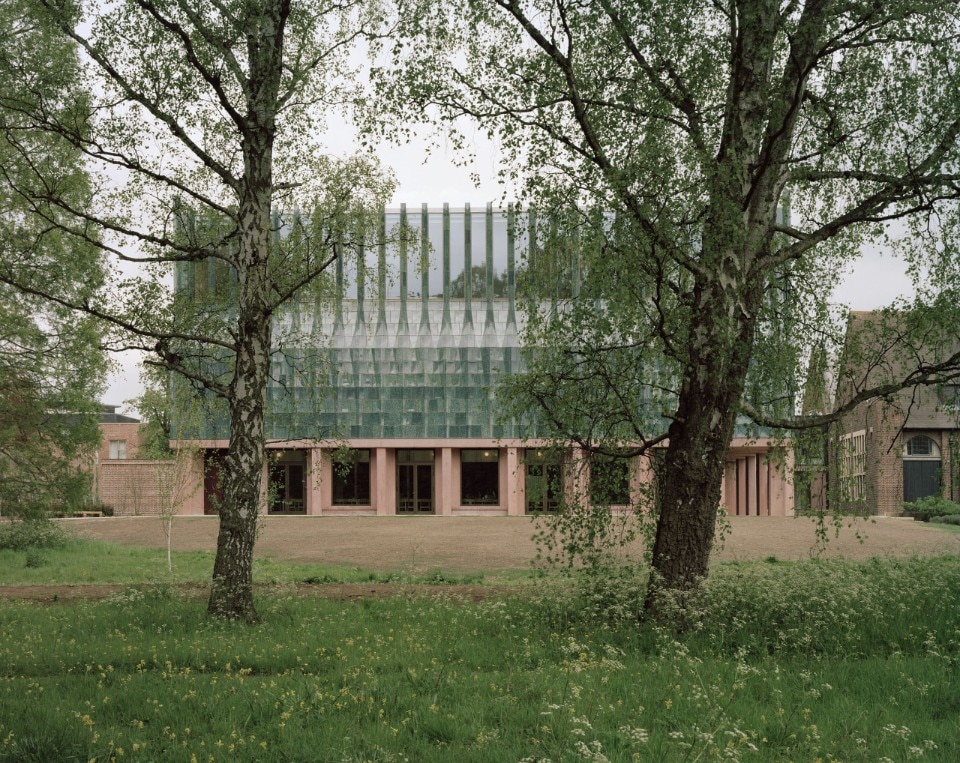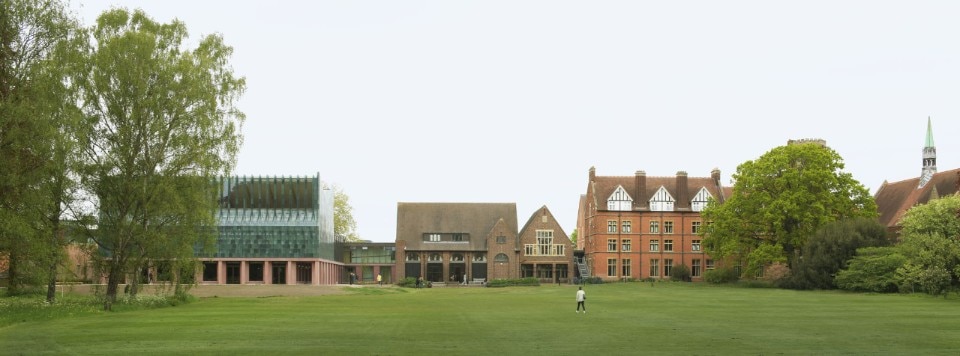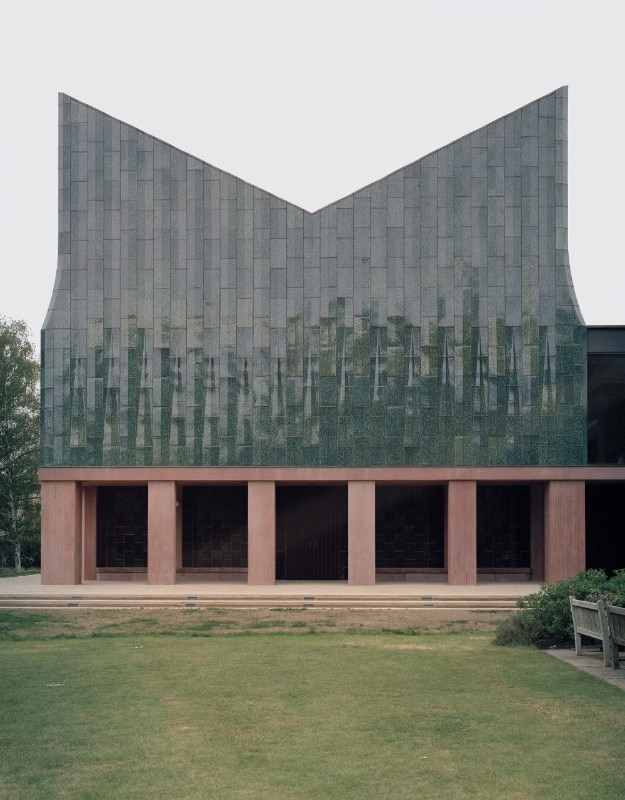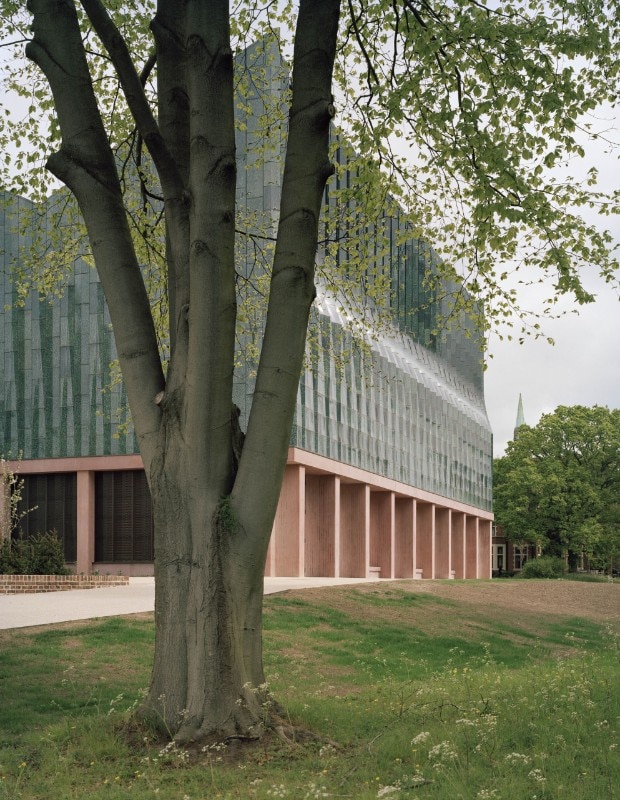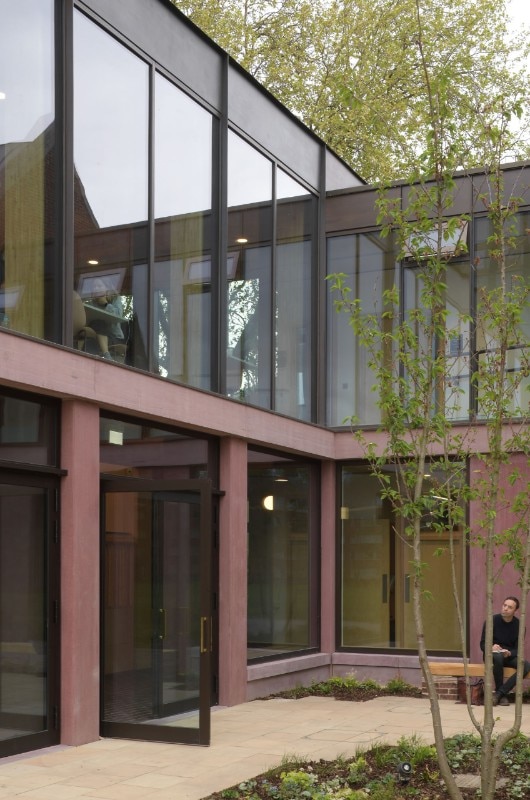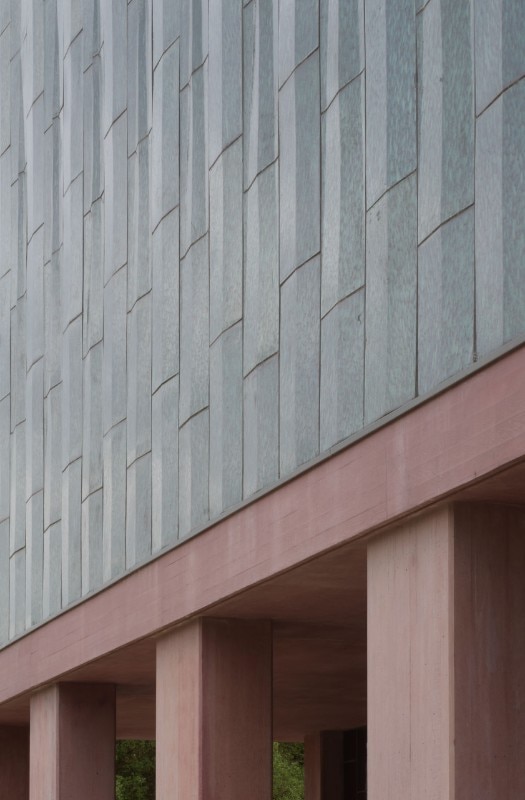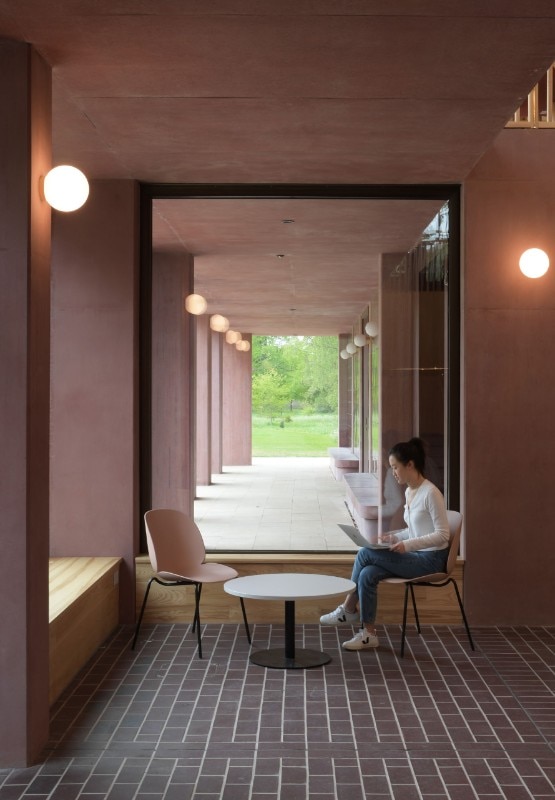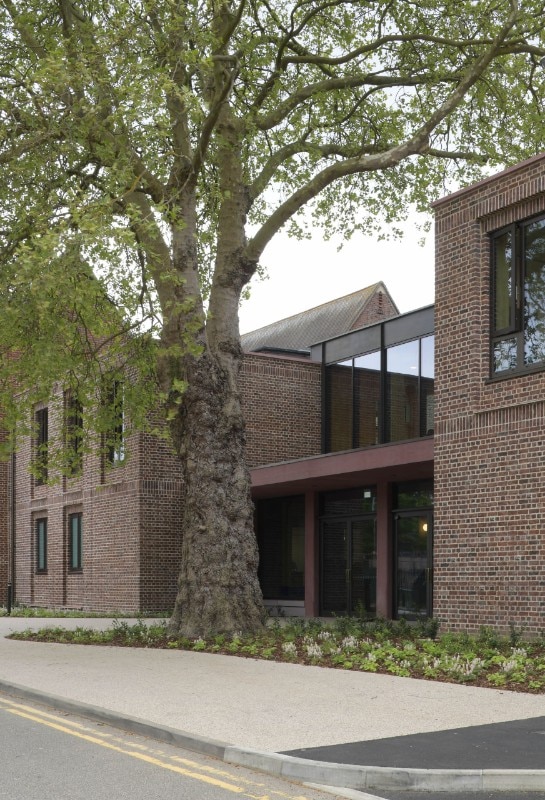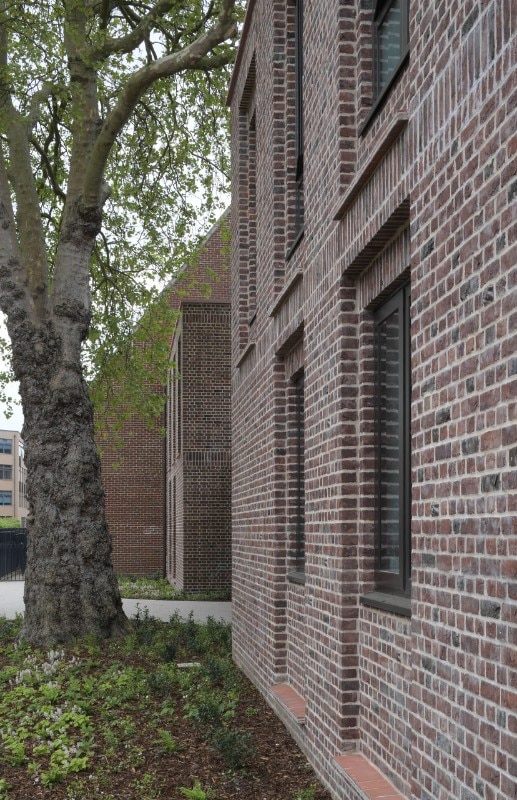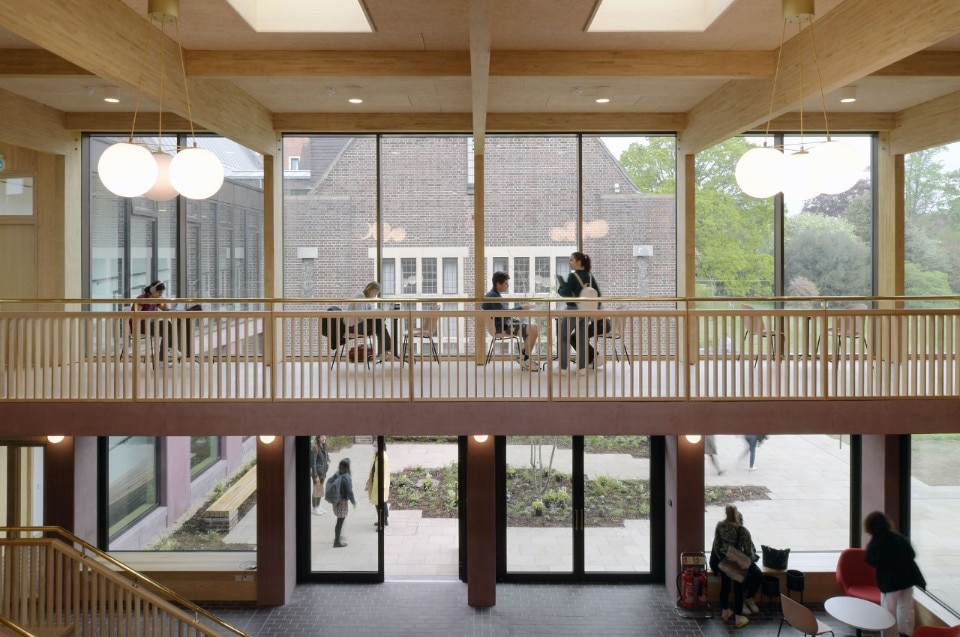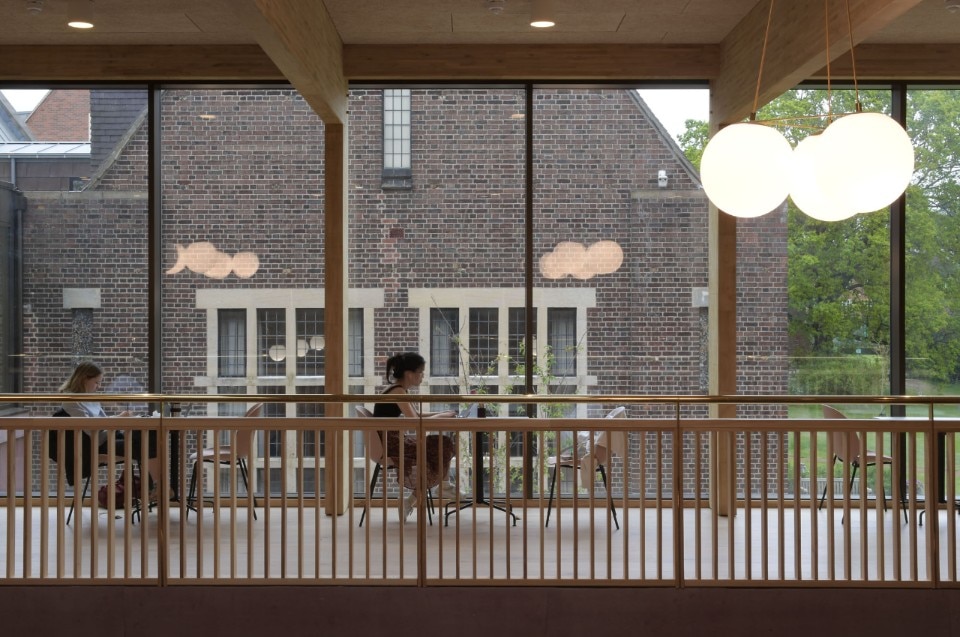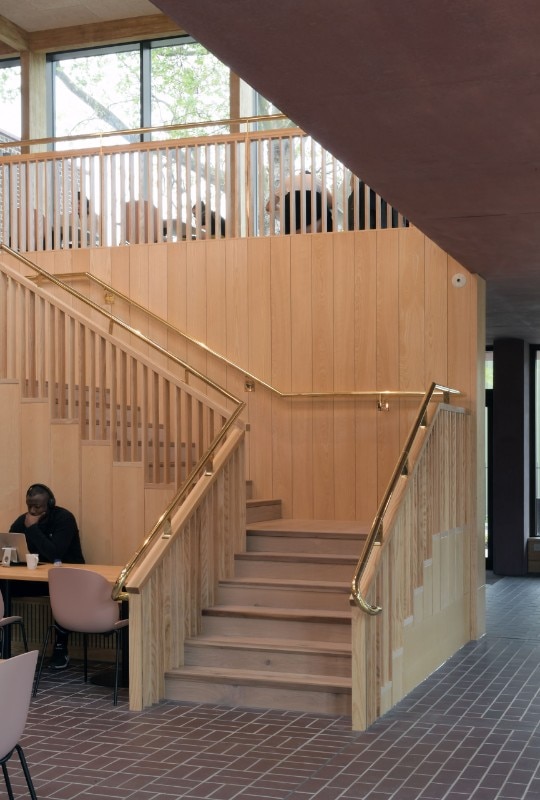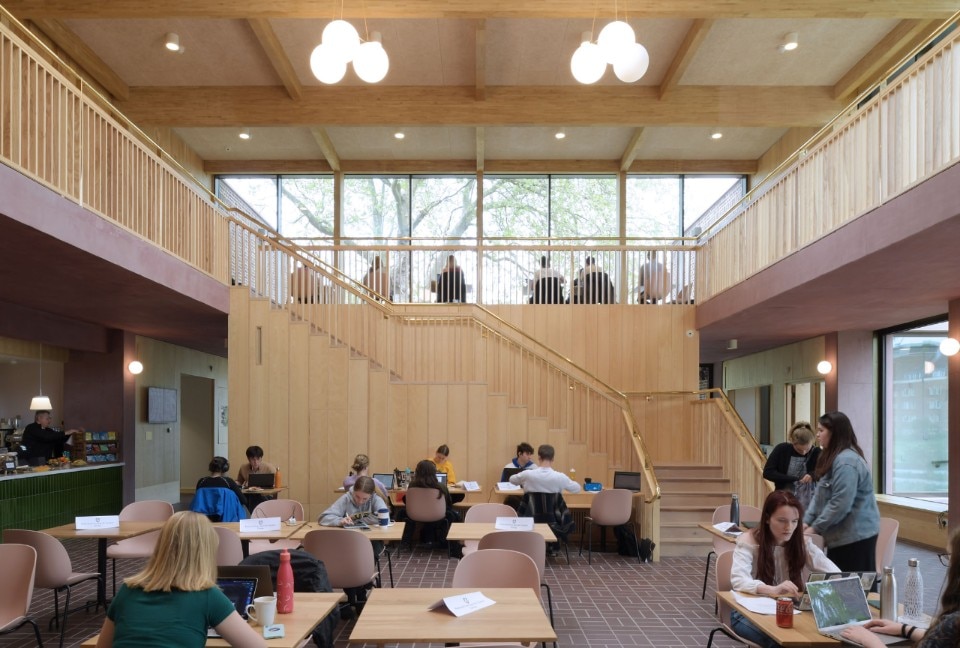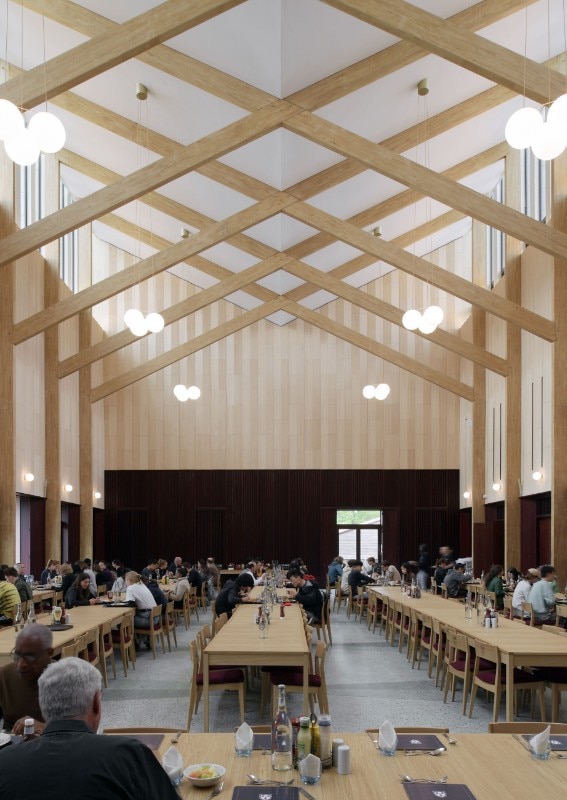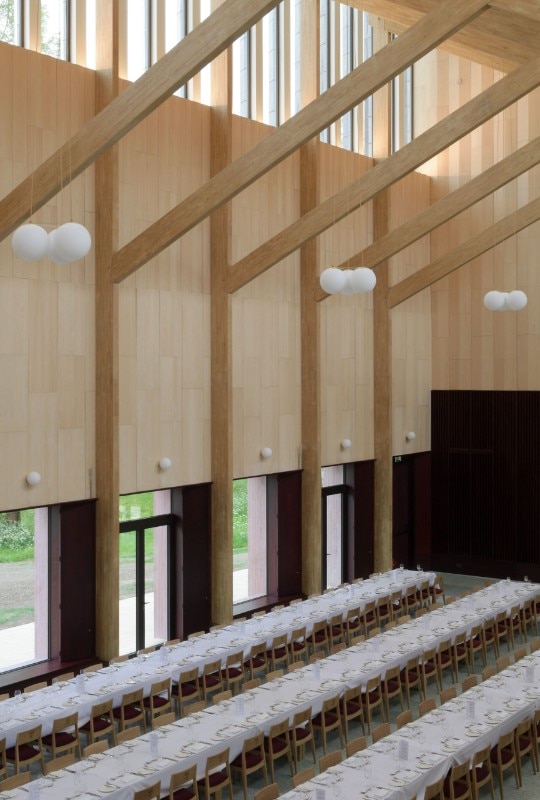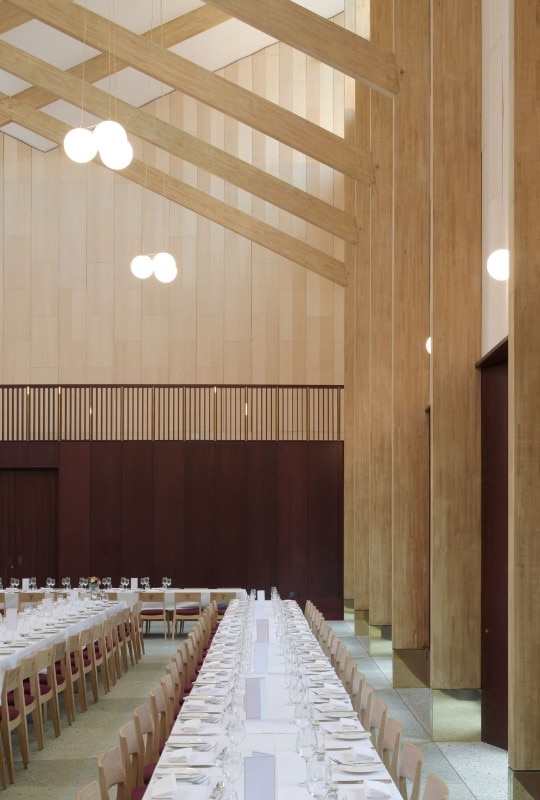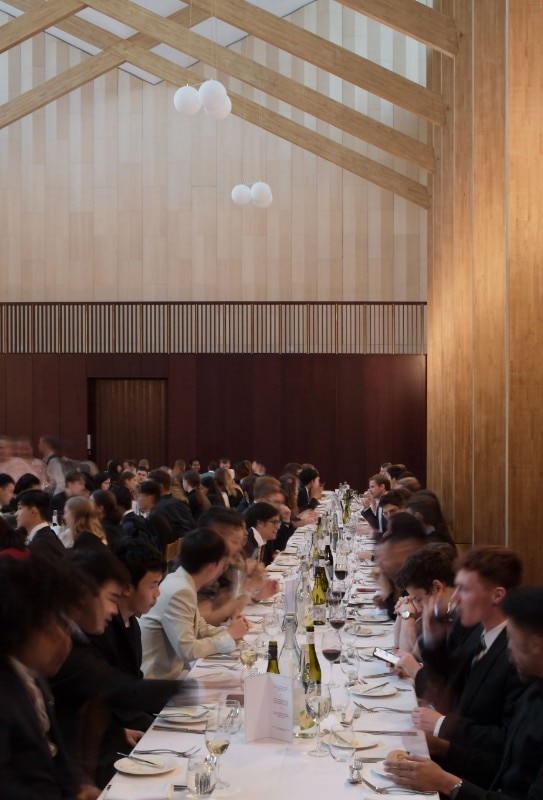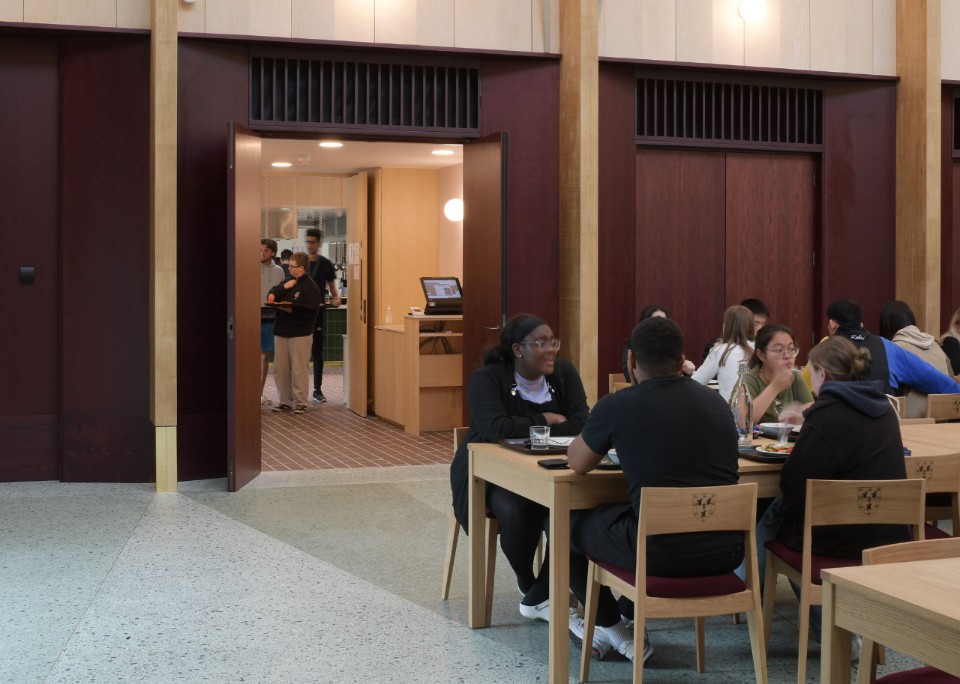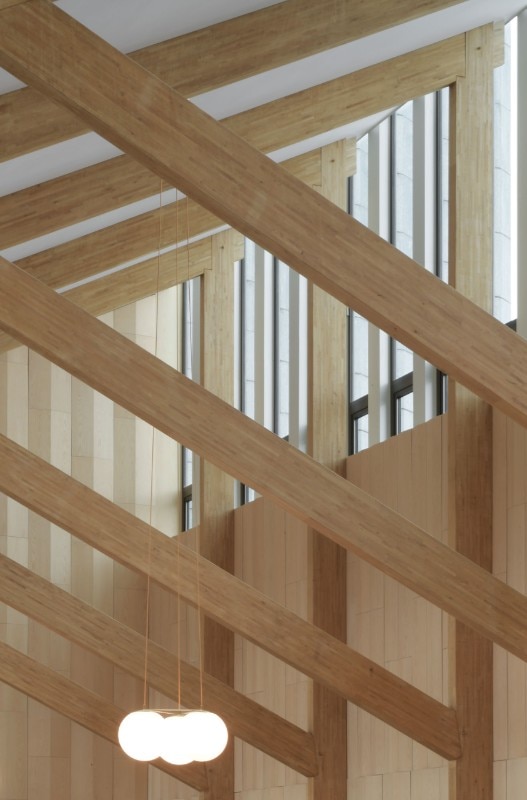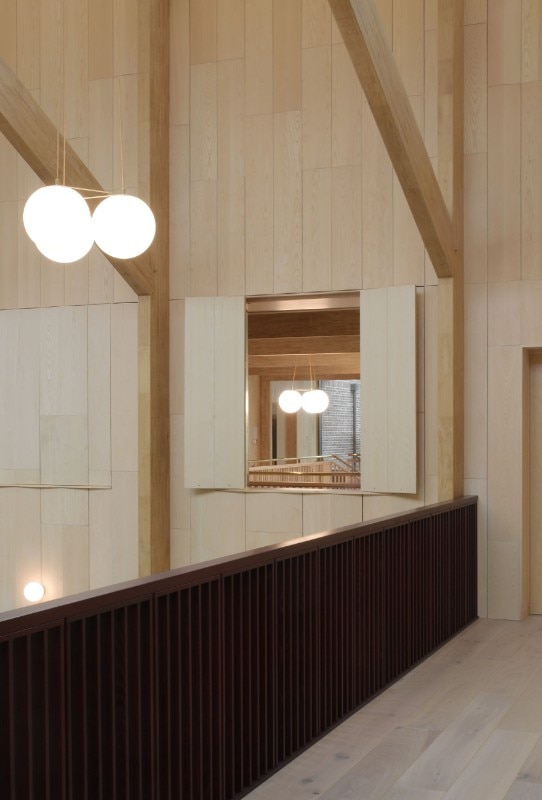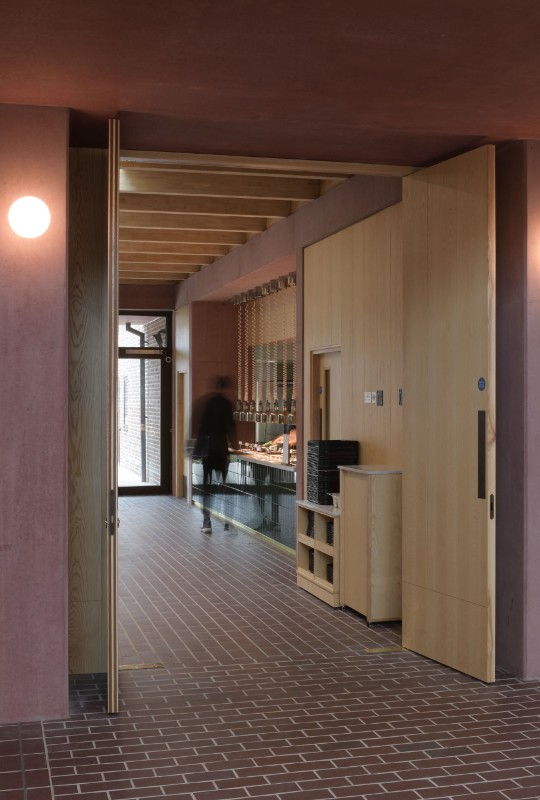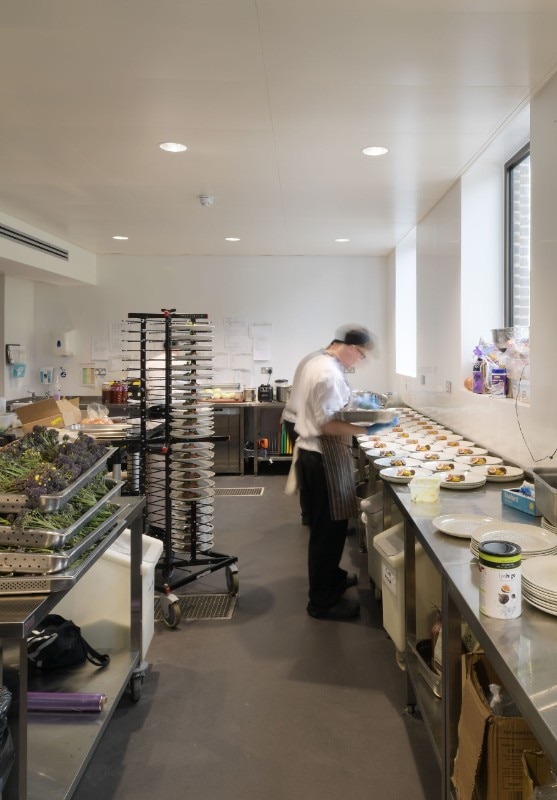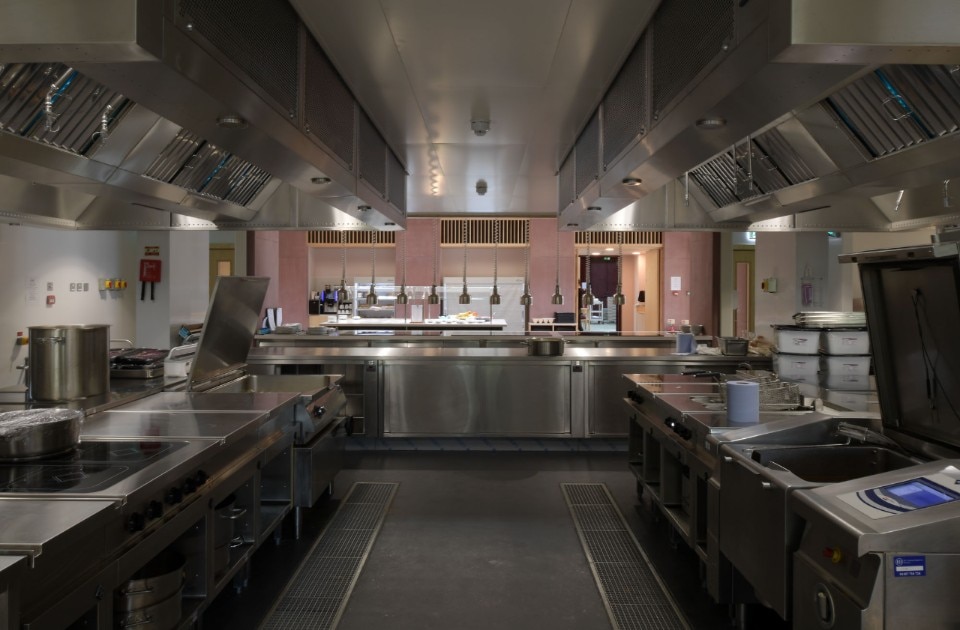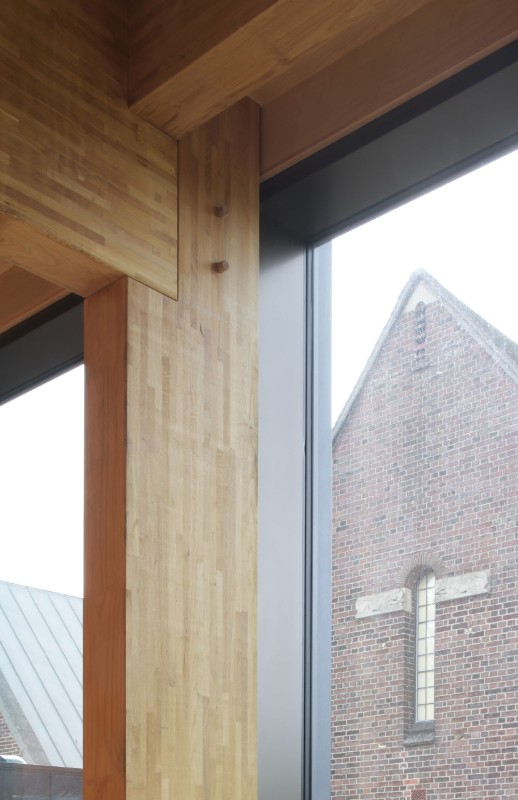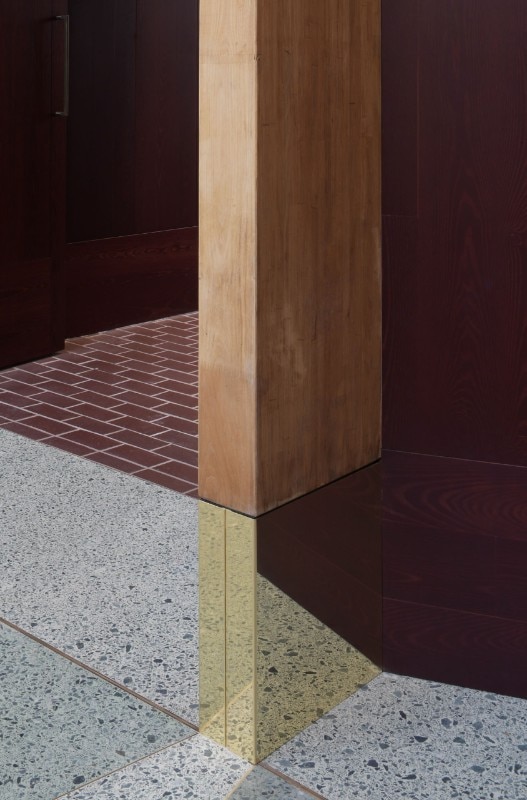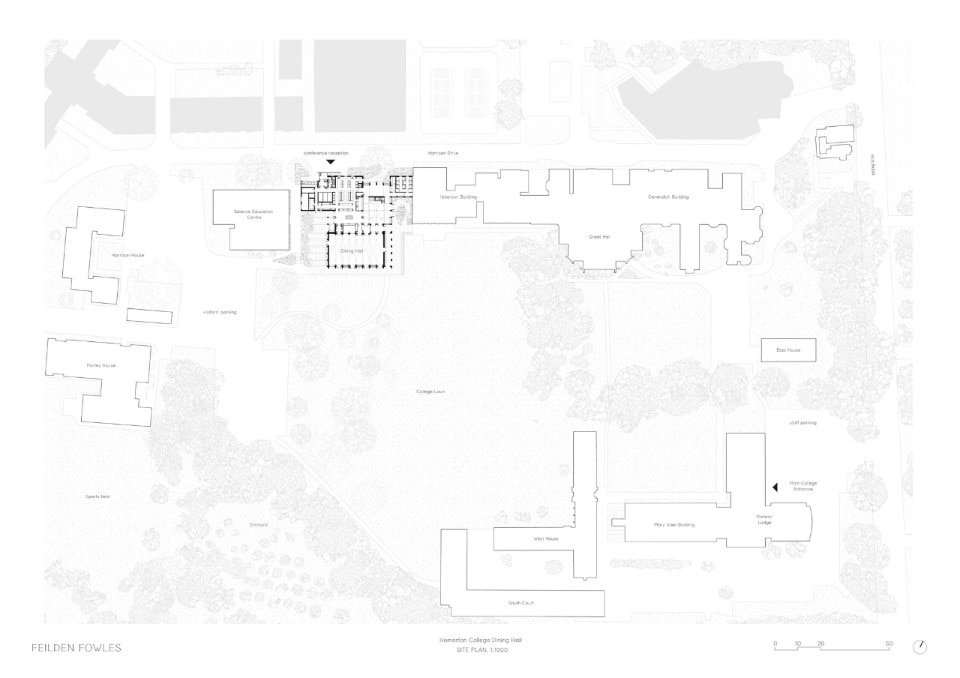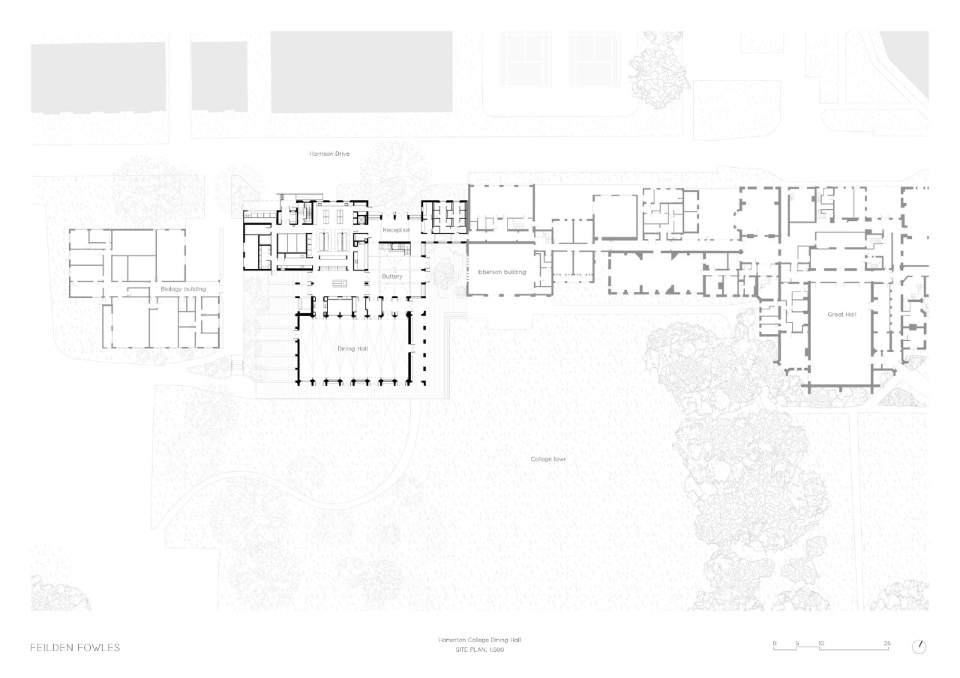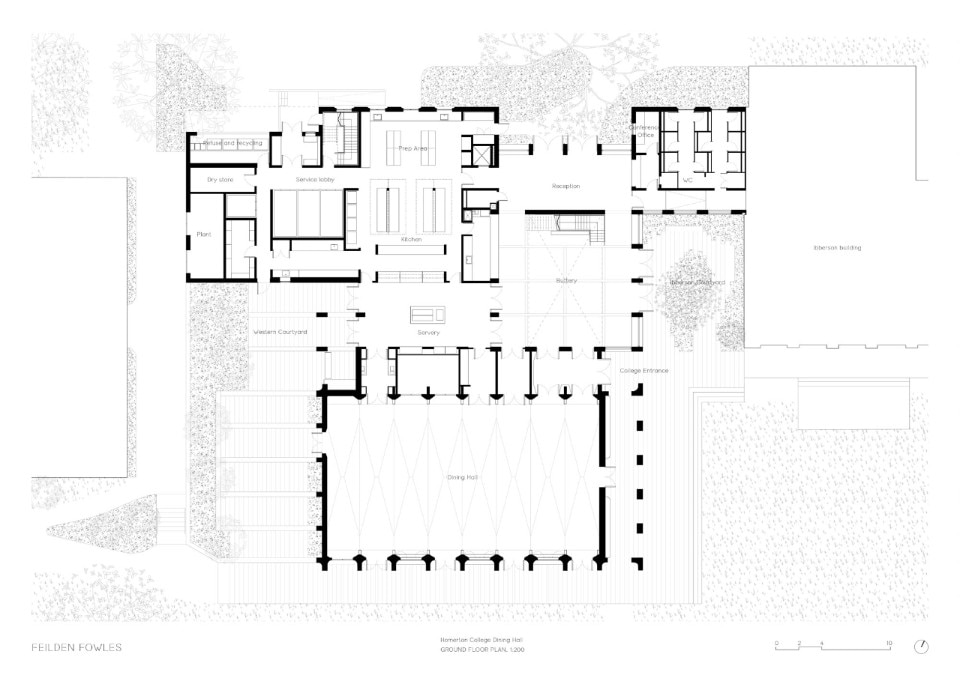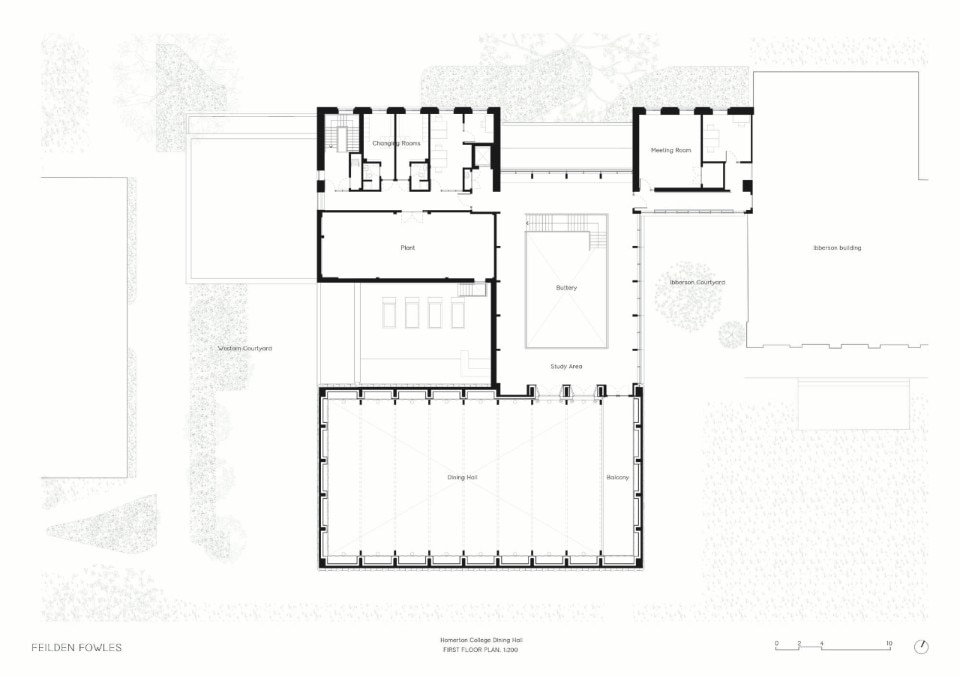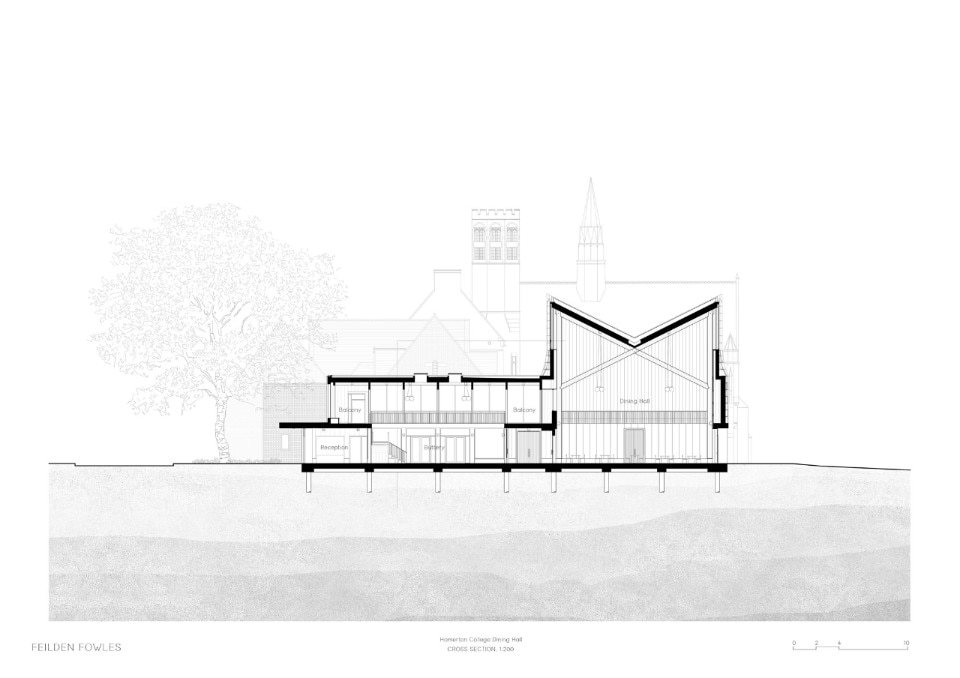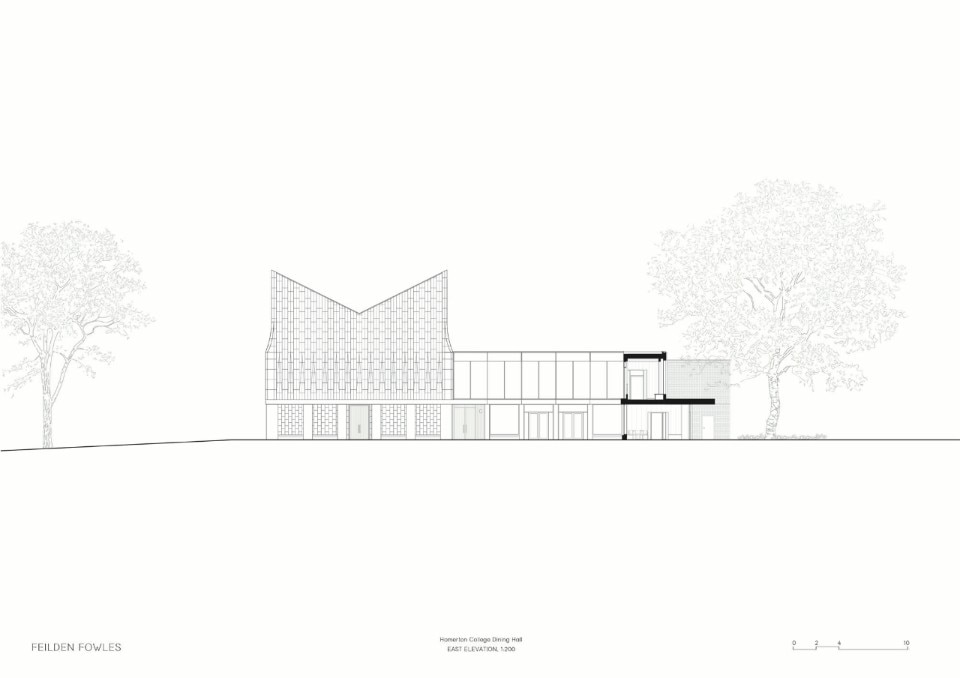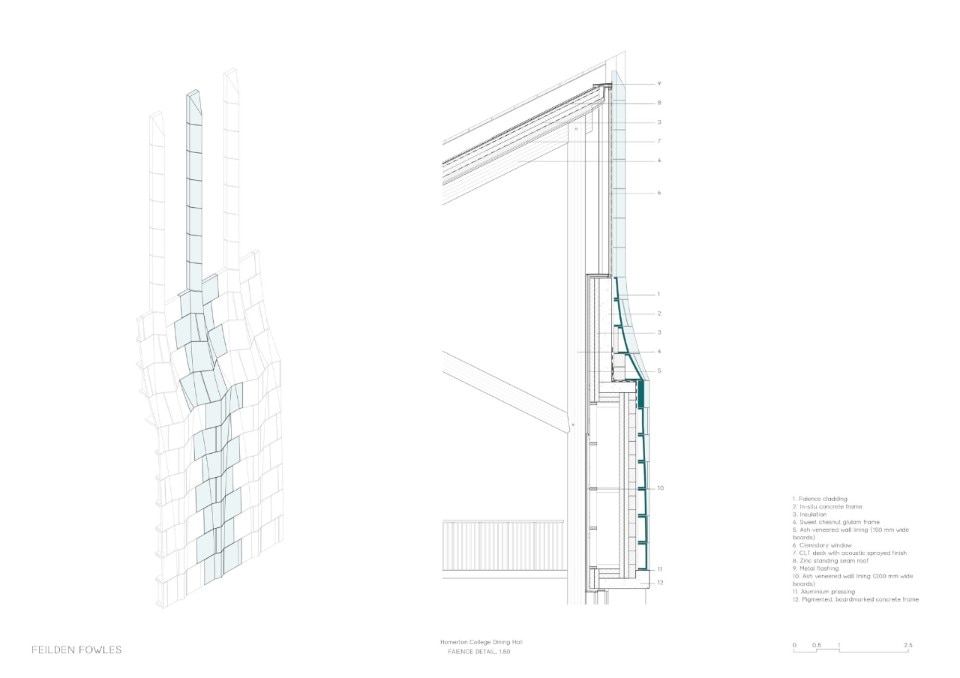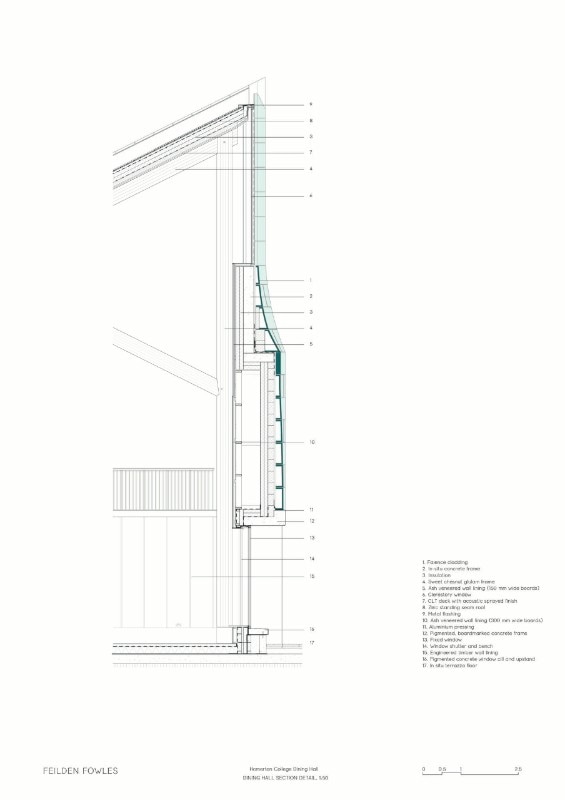Founded in 1768 as a training institute for freethinking teachers, in 1894 Homerton College moved from its original location in East London to Cambridge, maintaining for decades its specific training vocation for teachers until becoming, since 2010, a college in its own right and the largest – in terms of student numbers – in the city. The complex, located in a 10-hectare historic park with gardens, orchards and sports fields, is dotted with Victorian buildings in neo-Gothic style and inspired by the “Arts and Crafts” movement, among which the 1914 Ibberson Building stands out, with which the new building designed by the London-based Feilden Fowles studio dialogues in a balanced manner.
The new building, spread over an area of 3,000 square metres to the north-west of the property, includes a buttery, a dining hall, a cafeteria, kitchens and staff facilities, and acts as a focal point for relations with the vast park to the south-east, the historic buildings to the north and the student residences and car parks to the west. From the main entrance to the north on Harrison Drive, a lobby leads to the dining room to the south: the 336-capacity room offers daily meals to students, staff and visitors, as well as formal and commemorative dinners throughout the year in line with traditional Anglo-Saxon ceremonial halls. However, unlike many of the UK’s historic dining rooms, which are often dark and somewhat 'intimidating', it has a bright, convivial and inviting aura, thanks in part to the generous glazed openings that open up to the park and transform the building into an evocative, illuminated beacon at night.
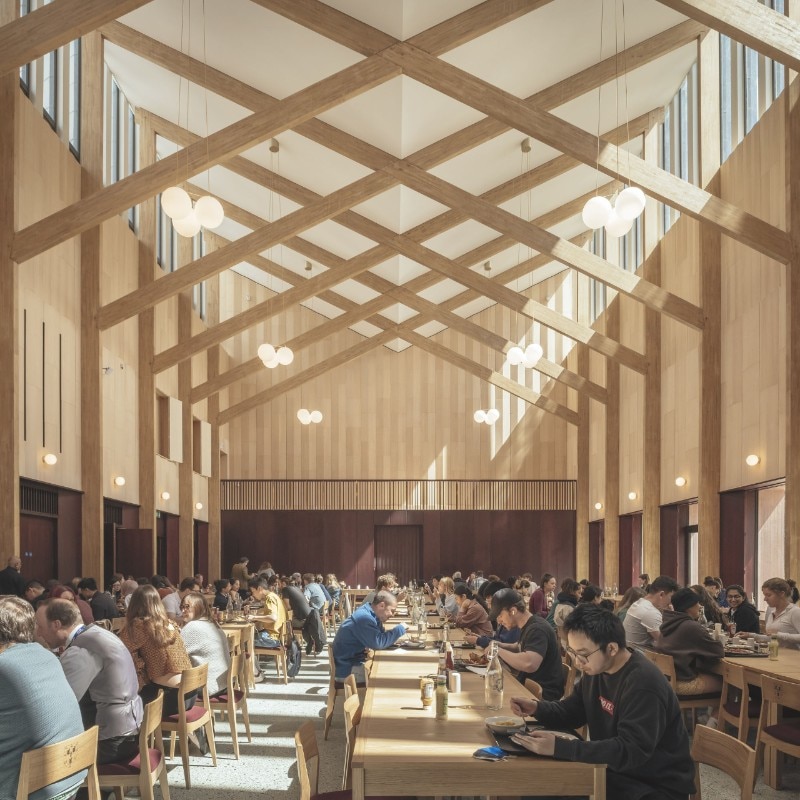
The choice of materials reflects an approach indebted to the typological and expressive characteristics of the context: the shades and finishes of the green glazed and handmade majolica tiles of the roof and façade, typical of many Victorian buildings, were designed to blend in with the palette of existing materials, from the lead and green oxidised copper fleche crowning the Great Hall, to the red bricks with sandstone details of the masonry; the soft chestnut glued laminated timber and butterfly truss structure of the hall echoes traditional collegiate halls, yet transforming the typical pitched form into a “valley” roof.
The building exalts the values of craftsmanship in line with the spirit of the “Art and Crafts” movement without, however, renouncing the use of contemporary technologies, from the off-site fabrication of the hall's wooden structure, manually installed by a local company using traditional carpentry methods, to the parametric modelling for the tiled façade.
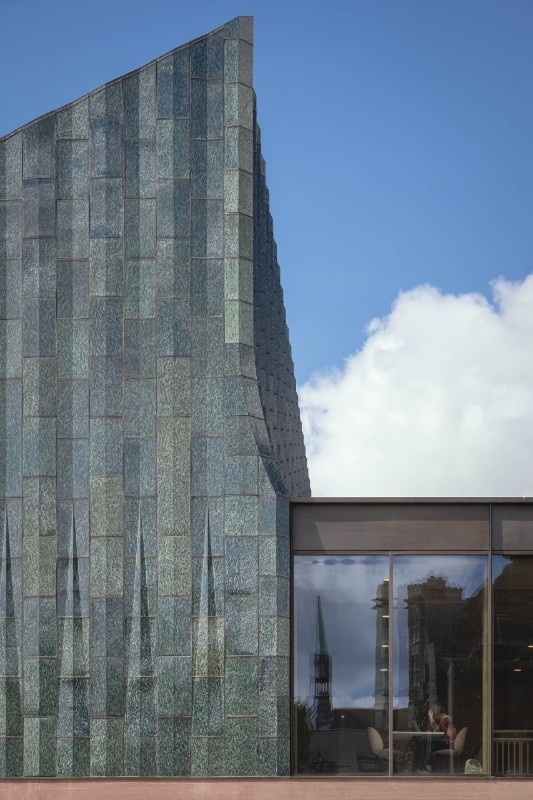
Finally, special attention is paid to environmental sustainability in a 'low tech' logic: the building, which is completely electric, is passive and is equipped with a ground source heat pump that reduces CO2 emissions for heating and hot water by about 40%; the prevalent natural ventilation in the common areas, the use of low water consumption systems, the focus on reducing Co2 emissions in the execution process, the recycling of construction waste and the use of food products sourced through sustainable food processes denote a "holistic" approach to construction and a strong assumption of responsibility in terms of reducing the "ecological footprint".
Opening image: Feilden Fowles, Dining hall, Homerton College, Cambridge, UK 2022. Photo Jim Stephenson
- Address:
- Homerton College, Hills Road, Cambridge CB2 8PH
- Completion:
- 2022
- Area:
- 3,000 sqm
- Gross internal floor area:
- 1,665 sqm
- Client:
- Homerton College
- Architects:
- Feilden Fowles
- Project team:
- Edmund Fowles, Eleanor Hedley, Akshara Pulpa, Rory Allen, Ben Higham, Nick Crane, Matthew Glen
- Main contractor:
- Matthew Ramplin, Barnes Construction
- Project manager:
- Nick Bryant, Ingleton Wood Martindales
- Structural engineers:
- Peter Laidler/Sophie Frith, Structure Workshop
- Service engineers:
- Andy Johnson, Max Fordham
- Acoustic engineers:
- Josh Rodell, Max Fordham
- Sustainability engineers:
- Hero Bennett, Max Fordham
- Civil engineers:
- John Bowstead, Peter Dann
- Landscape architects:
- Jack Marshall, SEED (concept), Mark Rogers, Hortus Collective
- Faience:
- Darwen Terracotta/Szerelmey
- Structural timber frame:
- Constructional Timber
- In-situ concrete:
- MJS Construction
- Internal joinery:
- Classic Barfitting Ltd


